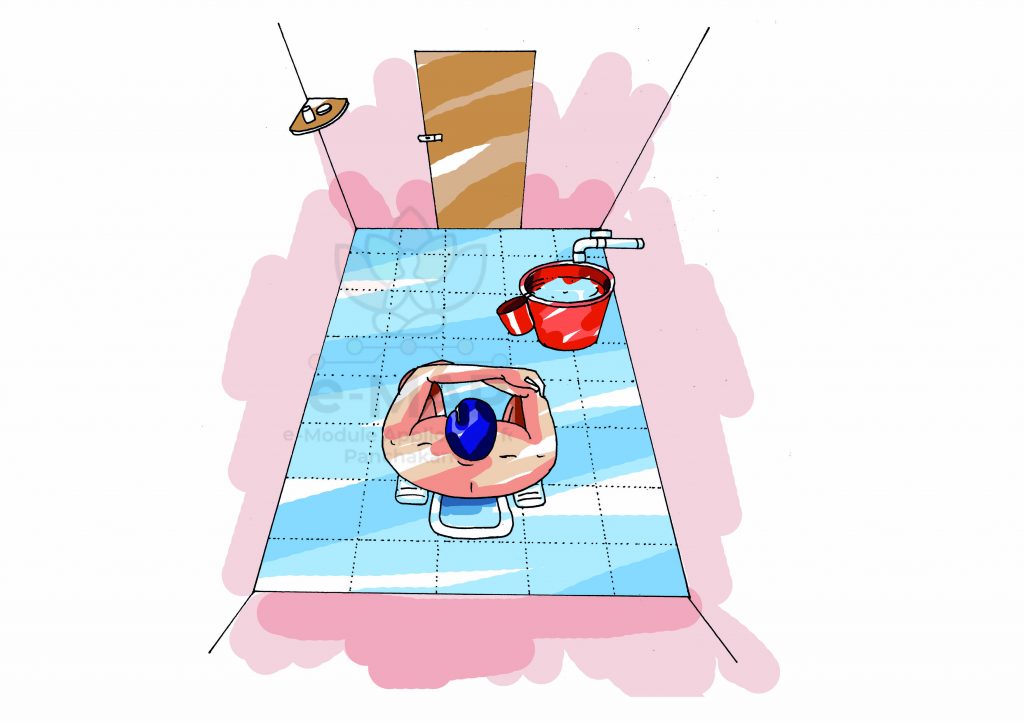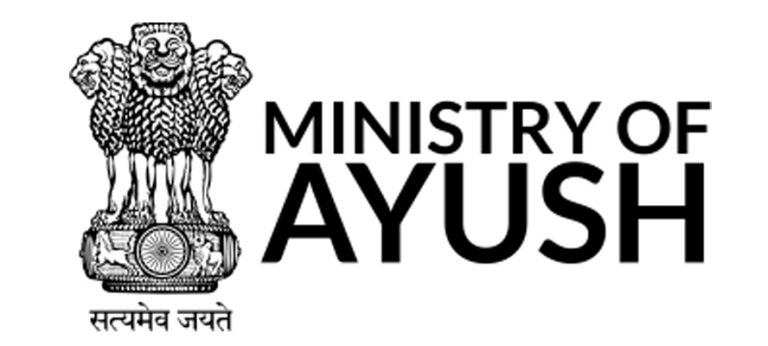
UG Module 5 - Lesson 6
VIRECHANA KARMA

EXPLANATORY NOTES
Time of Administration
अथापरेऽहनि विगतश्लेष्मधातुमातुरोपक्रमणीयादवेक्ष्यातुरमथास्मै औषधमात्रां पातुं प्रयच्छेत् ||
(Su. Chi. 33/20)
According to Suśruta, in the morning after vigata śleṣma dhātu, when the person is devoid of praseka, virecana auṣadha should be administered.
श्लेष्म–काले गते ज्ञात्वा कोष्ठं सम्यग् विरेचयेत् ॥ (A. H. Su.18/33)
Whereas Ācārya Vāgbhaṭa explains; virecana auṣadha should be administered after the śleṣma kāla.
Vihārās to be followed after the intake of virecana auṣadha:
विरेचनं पीतवांस्तु न वेगान् धारयेद्बुधः |
निवातशायी शीताम्बु न स्पृशेन्न प्रवाहयेत् || (Su. Chi. 33/22)
After the intake of virecana auṣadha, the person should not undergo dhāraṇa, he should reside in a room which is devoid of the direct entry of wind, he should not use śītambu, and should not pressurise himself during defecation.
Observations during virecana
The Vaidya should observe the auṣadha jīrṇa, ajīrṇa auṣadha lakṣanas, hrīta doṣā and vyāpats.
Jīrṇa auṣadha lakṣanas:
अनुलोमोऽनिलः स्वास्थ्यं क्षुत्तृष्णोर्जो मनस्विता|
लघुत्वमिन्द्रियोद्गारशुद्धिर्जीर्णौषधाकृतिः|| (Cha. Si. 6/26)
Vātanulomana, svāsthya, kṣut, pipāsā, mana prasannatā, laghutva, indriya śuddhi, and udgāra śuddhi are the jīrṇa auṣadha lakṣanas
Ajīrṇa auṣadha lakṣanas:
क्लमो दाहोऽङ्गसदनं भ्रमो मूर्च्छा शिरोरुजा|
अरतिर्बलहानिश्च सावशेषौषधाकृतिः|| (Cha. Si. 6/27)
Klāma, udgāra, aṅgasadana, bhrāma, mūrchā, śirorujā, arati, balahāni are the sāvaśeṣaauṣadha lakṣanas. In these lakṣanas, virecana dravyas should not be administered again as it may cause atiyoga.
Hrīta doṣā lakṣanas:
ऊर्ध्वं कफानुगे पित्ते विट्पित्तेऽनुकफे त्वधः|
हृतदोषं वदेत् कार्श्यदौर्बल्ये चेत् सलाघवे|| (Cha. Si. 6/20)
Passing of viṭ, pitta and kapha in chronological order, achieving kārśya, daurbalya and laghutā. These are also taken as the lakṣanas of complete virecana.
Management during virecana karma
————————-अप्रवृत्तौ तु पाययेत् ॥
उष्णाम्बु स्वेदयेद् अस्य पाणि–तापेन चोदरम् ।
उत्थाने ऽल्पे दिने तस्मिन् भुक्त्वान्ये–द्युः पुनः पिबेत् ॥
अदृढस्नेहकोष्ठस्तु पिबेदूर्ध्वं दशाहतः ।
भूयो ऽ प्युपस्कृस्तनुः स्नेहस्वेदैर्विरेचनम् ॥
यौगिकं सम्यगालोच्य स्मरन् पूर्वमतिक्रमम् । (A. H. Su. 18/37)
If the vegas are not expelled properly, he should drink uṣṇambu and his udara pradeśa should be fomented with palms and made warm. If only little quantity is expelled, he should take food on that day and again virecana has to be administered on the next day.
If the koṣṭha is not properly undergone snehana, he should be administered with snehana and svedana procedures for ten days. Then appropriate virecana auṣadha has to be given, after considering all aspects and memorizing the earlier effect.
SAMYAK LAKṢANAS
स्रोतोविशुद्धीन्द्रियसम्प्रसादौ लघुत्वमूर्जोऽग्निरनामयत्वम्||
प्राप्तिश्च विट्पित्तकफानिलानां सम्यग्विरिक्तस्य भवेत् क्रमेण|
(Cha. Si. 1/17-18)
According to Ācārya Caraka, samyak lakṣanas of virecana are clarity of body channels, clarity of sense organs, lightness of the body, patient become energetic, increase of agni (digestive power), free from disease and expulsion of faeces, pitta (bile), kapha (phlegm), and vāyu (flatus) in succession.
गतेषु दोषेषु कफान्वितेषु नाभ्या लघुत्वे मनसश्च तुष्टौ |
गतेऽनिले चाप्यनुलोमभावं सम्यग्विरिक्तं मनुजं व्यवस्येत् || (Su. Chi. 33/26)
According to Ācārya Suśruta, the person is said to be properly purged, when all the doṣas along with kapha are expelled out, when he feels light in the region of the umbilicus, gets satisfaction in the mind and downward movement of flatus is felt.
Ācārya vāgbhaṭa said that samyak virecana lakṣanas are exactly opposite of the ayoga lakṣanas of virecana.
AYOGA LAKṢANAS
स्याच्छ्लेष्मपित्तानिलसम्प्रकोपः सादस्तथाऽग्नेर्गुरुता प्रतिश्या||
तन्द्रा तथा च्छर्दिररोचकश्च वातानुलोम्यं न च दुर्विरिक्ते| (Cha. Si. 1/18-19)
According to Ācārya Caraka, the ayoga lakṣanas of virecana are excessive aggravation of kapha, pitta and vāyu, agni sāda (suppression of agni), gaurava (heaviness of the body), pratiśyāya (rhinitis), tandrā (drowsiness), chardi (vomiting), arocaka (anorexia), absence of downward movement of flatus.
हृत्कुक्ष्यशुद्धिररुचिरुत्क्लेशः श्लेष्मपित्तयोः||
कण्डूविदाहः पिटिकाः पीनसो वातविङ्ग्रहः|
अयोगलक्षणम्———————————–|| (A. H. Su. 18/38)
According to Ācārya Vāgbhaṭa, the ayoga lakṣanas of virecana are hṛt, kukṣi aśuddhi (improper cleaning of the heart and abdomen), aruci (anorexia), kapha pitta utkleśa (salivation associated with kapha and pitta), kaṇḍū (itching), vidāha (burning sensation in the abdomen), piḍaka (eruptions on the skin), pīnasa (rhinitis), vāta viṭgraha (obstruction of flatus and faeces).
हृत्कुक्ष्यशुद्धिः परिदाहकण्डूविण्मूत्रसङ्गाश्च न सद्विरिक्ते | (Su. Chi. 33/24)
According to Ācārya Suśruta, if purgationis not proper, there will be impurity in the chest and abdomen, feeling of burning sensation all over the body, irritation and obstruction of faeces and urine.
ATIYOGA LAKṢANAS
कफास्रपित्तक्षयजानिलोत्थाः सुप्त्यङ्गमर्दक्लमवेपनाद्याः||
निद्राबलाभावतमःप्रवेशाः सोन्मादहिक्काश्च विरेचितेऽति| (Cha. Si. 1/19-20)
According to Ācārya Caraka, virecana atiyoga lakṣanas are diseases caused by aggravated vāta as a result of diminution of kapha, rakta and pitta, supti (numbness), aṅgamarda (body pain), klama (fatigue), vepana (tremor), nidrā abhāva (insomnia), bala abhāva (debility), tāma praveśa (fainting), unmāda (insanity) and hikkā (hiccup).
विट्पित्तकफवातेषु निःसृतेषु क्रमात्स्रवेत्|
निःश्लेष्मपित्तमुदकं श्वेतं कृष्णं सलोहितम्||
मांसधावनतुल्यं वा मेदःखण्डाभमेव वा|
गुदनिःसरणं तृष्णा भ्रमो नेत्रप्रवेशनम्||
भवन्त्यतिविरिक्तस्य तथाऽतिवमनामयाः| (A.Hr.Su.18/40-41)
According to Ācārya Vāgbhaṭa, the virecana atiyoga lakṣanas are liquid material without associating any doṣas will be eliminated from the body after the elimination of faeces, pitta, kapha and vāta in the succeeding order. Such liquid material may be whitish or blackish in colour or associated with blood or the colour resembling red blood or māṃsadhāvana tulya (resembling the water in which meat has been washed) or medo khaṇḍābhameva (looks like a piece of fatty tissue) will be discharged. Other symptoms includes guda nissaraṇa (prolapsed rectum), tṛṣṇā (thirst), bhrama (giddiness), netrapraveśana (sunken eyes) and also the symptoms of excessive emesis.
मूर्च्छागुदभ्रंशकफातियोगाः शूलोद्गमश्चातिविरिक्तलिङ्गम् || (Su. Chi. 33/24)
According to Ācārya Suśruta, virecana atiyoga lakṣanas are fainting, prolapse of the rectum, excess elimination of kapha and svere pain.
सम्यक् विरिक्तं चैनं वमनोक्तेन धूमवर्जेन विधिनोपपादयेदाबलवर्णप्रकृतिलाभात्,
(Cha. Su. 15/17)
After virecana karma, all the diet and regimen mentioned for vamana karma should be followed except dhūmapāna. Soon after the karma according to the śuddhi attained for virecana the saṃsarjanakrāma has to be followed, in order to bring back the strength and the normal state of the agni.
संशोधनाभ्यां शुद्धस्य हृतदोषस्य देहिनः|
यात्यग्निर्मन्दतां तस्मात् क्रमं पेयादिमाचरेत्||२४|| (Cha. Si. 6/24)
Soon after the karma according to the śuddhi attained for virecana the saṃsarjanakrāma has to be followed, in order to bring back the strength and the normal state of the agni.
सम्यग्विरिक्तमेनं च वमनोक्तेन योजयेत्||
धूमवर्ज्येन विधिना ततो वमितवानिव|
क्रमेणान्नानि भुञ्जानो भजेत्प्रकृतिभोजनम्|| (A. H. Su. 18/ 42-43)
After obtaining proper signs and symptoms of purgation follow the post-operative regimen similar to emesis except dhūmapāna. Afterwards follow saṃsarjanakrāma.
IMPORTANT SLOKA
अथापरेऽहनि विगतश्लेष्मधातुमातुरोपक्रमणीयादवेक्ष्यातुरमथास्मै औषधमात्रां पातुं प्रयच्छेत् ||(Su.Chi.33/20)
According to Suśruta, in the morning after vigata śleṣma dhātu, when the person is devoid of praseka, virecana auṣadha should be administered.
श्लेष्म–काले गते ज्ञात्वा कोष्ठं सम्यग् विरेचयेत् ॥ (A. H. Su.18/33)
Virecana auṣadha should be administered after the śleṣma kāla.
विरेचनं पीतवांस्तु न वेगान् धारयेद्बुधः |
निवातशायी शीताम्बु न स्पृशेन्न प्रवाहयेत् || (Su. Chi. 33/22)
After the intake of virecana auṣadha, the person should not undergo dhāraṇa, he should reside in a room which is devoid of the direct entry of wind, he should not use śītambu, and should not pressurise himself during defecation.
अनुलोमोऽनिलः स्वास्थ्यं क्षुत्तृष्णोर्जो मनस्विता|
लघुत्वमिन्द्रियोद्गारशुद्धिर्जीर्णौषधाकृतिः|| (Ch. Si. 6/26)
Vātanulomana, svāsthya, kṣut, pipāsā, mana prasannatā, laghutva, indriya śuddhi, and udgāra śuddhi are the jīrṇa auṣadha lakṣanas
क्लमो दाहोऽङ्गसदनं भ्रमो मूर्च्छा शिरोरुजा|
अरतिर्बलहानिश्च सावशेषौषधाकृतिः|| (Ch. Si. 6/27)
Klāma, udgāra, aṅgasadana, bhrāma, mūrchā, śirorujā, arati, balahāni are the sāvaśeṣaauṣadha lakṣanas. In these lakṣanas, virecana dravyas should not be administered again as it may cause atiyoga.
————————-अप्रवृत्तौ तु पाययेत् ॥
उष्णाम्बु स्वेदयेद् अस्य पाणि–तापेन चोदरम् ।
उत्थाने ऽल्पे दिने तस्मिन् भुक्त्वान्ये–द्युः पुनः पिबेत् ॥
अदृढस्नेहकोष्ठस्तु पिबेदूर्ध्वं दशाहतः ।
भूयो ऽ प्युपस्कृस्तनुः स्नेहस्वेदैर्विरेचनम् ॥
यौगिकं सम्यगालोच्य स्मरन् पूर्वमतिक्रमम् । (A. H. Su. 18/37)
If the vegas are not expelled properly, he should drink uṣṇambu and his udara pradeśa should be fomented with palms and made warm. If only little quantity is expelled, he should take food on that day and again virecana has to be administered on the next day.
If the koṣṭha is not properly undergone snehana, he should be administered with snehana and svedana procedures for ten days. Then appropriate virecana auṣadha has to be given, after considering all aspects and memorizing the earlier effect.
स्रोतोविशुद्धीन्द्रियसम्प्रसादौ लघुत्वमूर्जोऽग्निरनामयत्वम्||
प्राप्तिश्च विट्पित्तकफानिलानां सम्यग्विरिक्तस्य भवेत् क्रमेण| (Ch. Si. 1/17-18)
According to Ācārya Caraka, samyak lakṣanas of virecana are clarity of body channels, clarity of sense organs, lightness of the body, patient become energetic, increase of agni (digestive power), free from disease and expulsion of faeces, pitta (bile), kapha (phlegm), and vāyu (flatus) in succession
स्याच्छ्लेष्मपित्तानिलसम्प्रकोपः सादस्तथाऽग्नेर्गुरुता प्रतिश्या||
तन्द्रा तथा च्छर्दिररोचकश्च वातानुलोम्यं न च दुर्विरिक्ते| (Ch. Si. 1/18-19)
According to Ācārya Caraka, the ayoga lakṣanas of virecana are excessive aggravation of kapha, pitta and vāyu, agni sāda (suppression of agni), gaurava (heaviness of the body), pratiśyāya (rhinitis), tandrā (drowsiness), chardi (vomiting), arocaka (anorexia), absence of downward movement of flatus.
हृत्कुक्ष्यशुद्धिररुचिरुत्क्लेशः श्लेष्मपित्तयोः॥३८॥
कण्डूर्विदाहः पिटिकाः पीनसो वातविङ्ग्रहः।
अयोगलक्षणम्———————————-। (AH.Su.18/38-39)
According to Ācārya Vāgbhaṭa, the ayoga lakṣanas of virecana are hṛt, kukṣi aśuddhi (improper cleaning of the heart and abdomen), aruci (anorexia), kapha pitta utkleśa (salivation associated with kapha and pitta), kaṇḍū (itching), vidāha (burning sensation in the abdomen), piḍaka (eruptions on the skin), pīnasa (rhinitis), vāta viṭgraha (obstruction of flatus and faeces).
कफास्रपित्तक्षयजानिलोत्थाः सुप्त्यङ्गमर्दक्लमवेपनाद्याः||
निद्राबलाभावतमःप्रवेशाः सोन्मादहिक्काश्च विरेचितेऽति| (Ch. Si. 1/19-20)
According to Ācārya Caraka, virecana atiyoga lakṣanas are diseases caused by aggravated vāta as a result of diminution of kapha, rakta and pitta, supti (numbness), aṅgamarda (body pain), klama (fatigue), vepana (tremor), nidrā abhāva (insomnia), bala abhāva (debility), tāma praveśa (fainting), unmāda (insanity) and hikkā (hiccup).
विट्पित्तकफवातेषु निःसृतेषु क्रमात्स्रवेत्|
निःश्लेष्मपित्तमुदकं श्वेतं कृष्णं सलोहितम्||
मांसधावनतुल्यं वा मेदःखण्डाभमेव वा|
गुदनिःसरणं तृष्णा भ्रमो नेत्रप्रवेशनम्||
भवन्त्यतिविरिक्तस्य तथाऽतिवमनामयाः| (A.H.Su.18/40-41)
According to Ācārya Vāgbhaṭa, the virecana atiyoga lakṣanas are liquid material without associating any doṣas will be eliminated from the body after the elimination of faeces, pitta, kapha and vāta in the succeeding order. Such liquid material may be whitish or blackish in colour or associated with blood or the colour resembling red blood or māṃsadhāvana tulya (resembling the water in which meat has been washed) or medo khaṇḍābhameva (looks like a piece of fatty tissue) will be discharged. Other symptoms includes guda nissaraṇa (prolapsed rectum), tṛṣṇā (thirst), bhrama (giddiness), netrapraveśana (sunken eyes) and also the symptoms of excessive emesis.
सम्यक् विरिक्तं चैनं वमनोक्तेन धूमवर्जेन विधिनोपपादयेदाबलवर्णप्रकृतिलाभात्, (Ch. Su. 15/17)
After virecana karma, all the diet and regimen mentioned for vamana karma should be followed except dhūmapāna. Soon after the karma according to the śuddhi attained for virecana the saṃsarjanakrāma has to be followed, in order to bring back the strength and the normal state of the agni.
संशोधनाभ्यां शुद्धस्य हृतदोषस्य देहिनः|
यात्यग्निर्मन्दतां तस्मात् क्रमं पेयादिमाचरेत्||२४|| (Ch. Si. 6/24)
Soon after the karma according to the śuddhi attained for virecana the saṃsarjanakrāma has to be followed, in order to bring back the strength and the normal state of the agni.
सम्यग्विरिक्तमेनं च वमनोक्तेन योजयेत्||
धूमवर्ज्येन विधिना ततो वमितवानिव|
क्रमेणान्नानि भुञ्जानो भजेत्प्रकृतिभोजनम्|| (A. H. Su. 18/ 42-43)
After obtaining proper signs and symptoms of purgation follow the post-operative regimen similar to emesis except dhūmapāna. Afterwards follow saṃsarjanakrāma.



